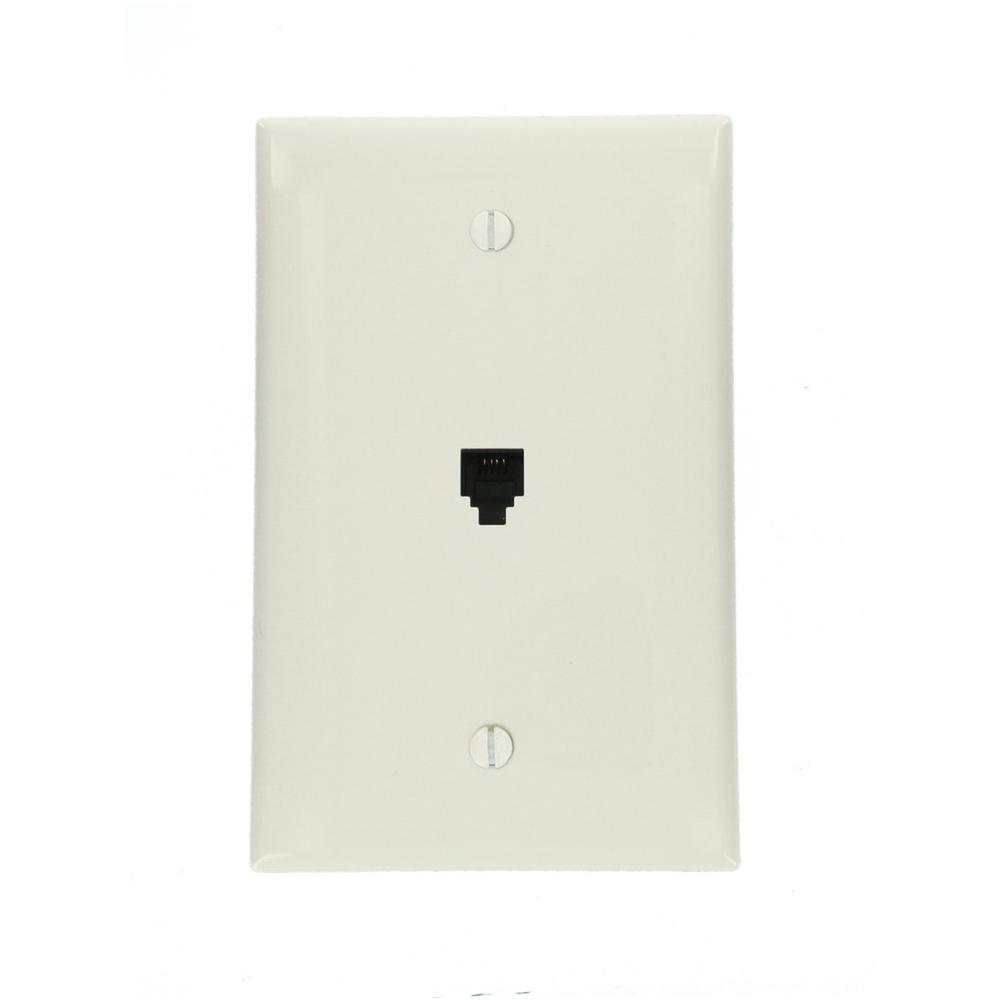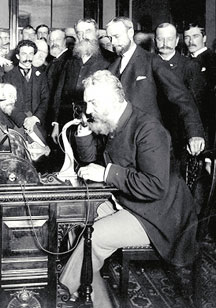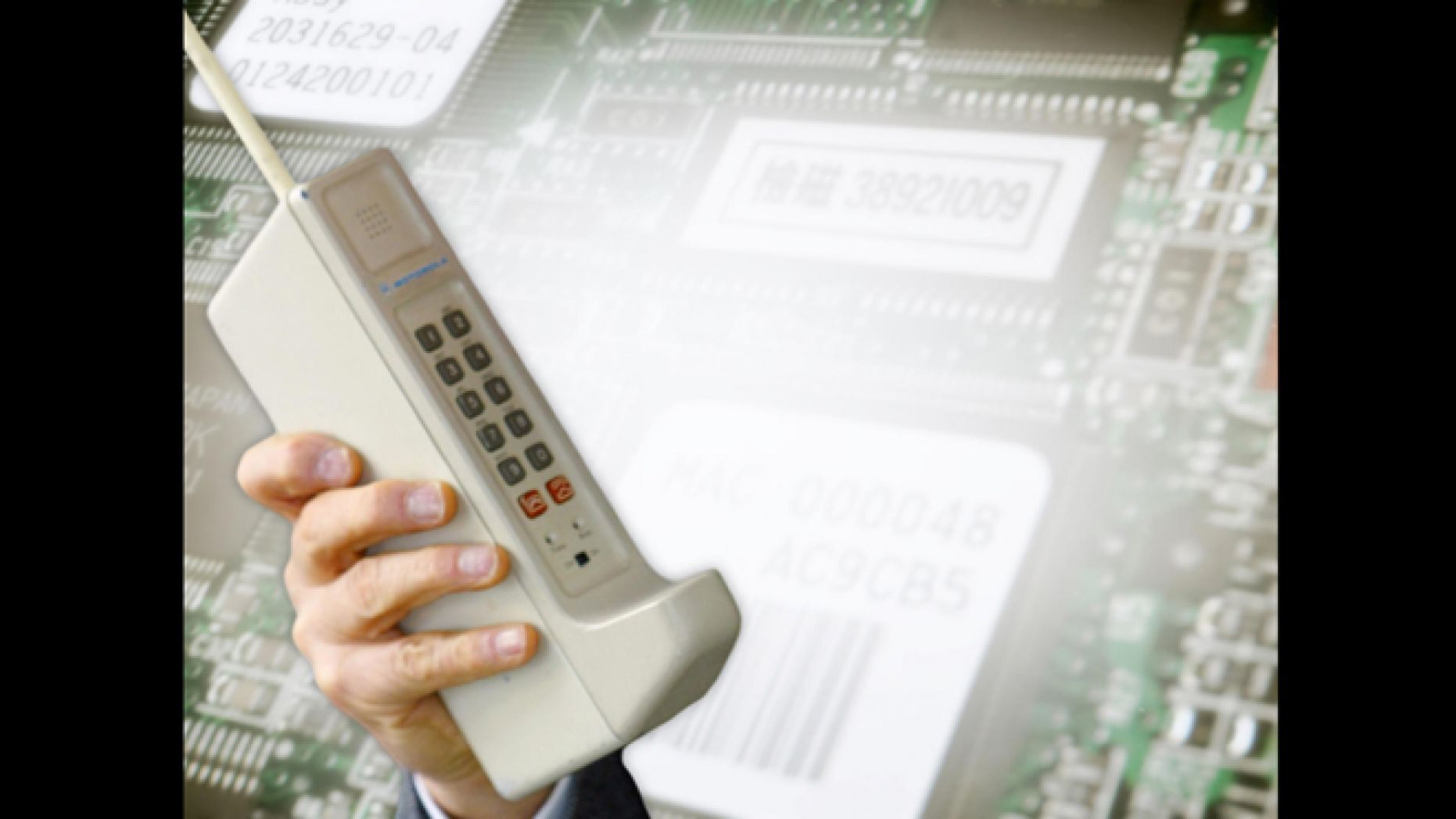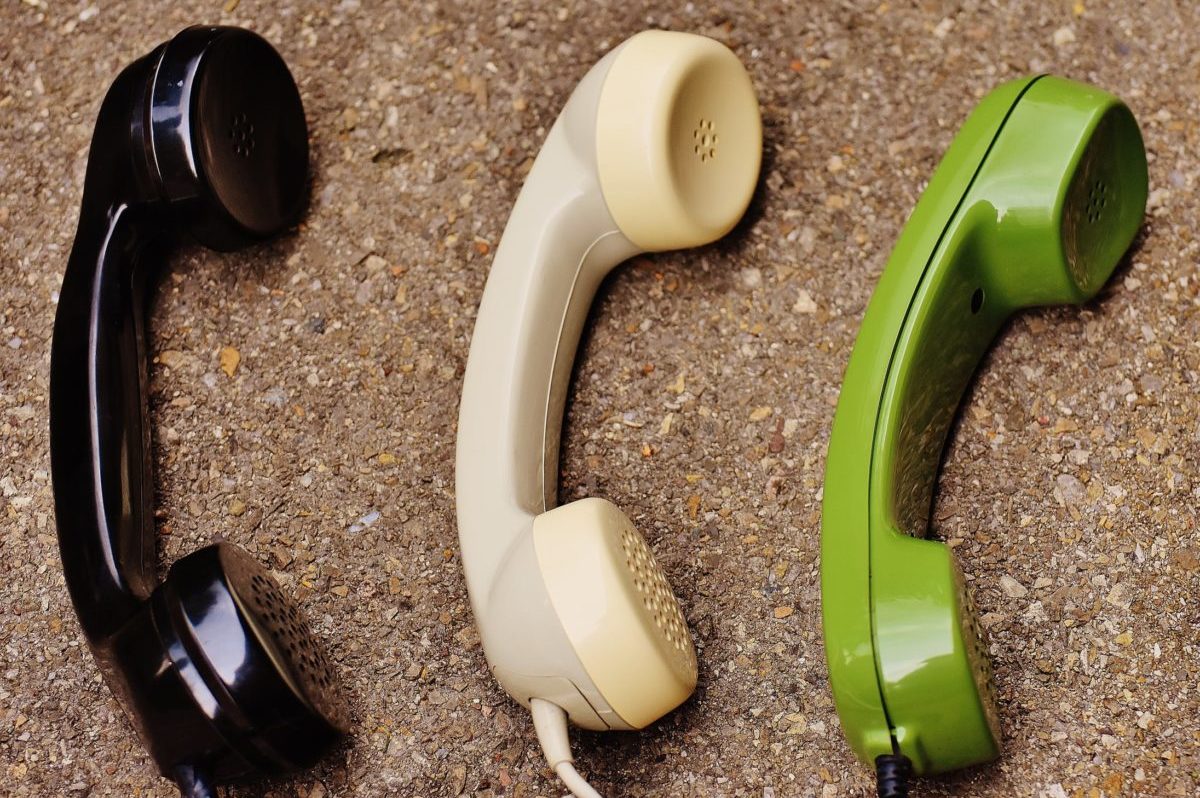
So, what is a landline anyway?
A landline is a phone that transmits signals converted from audio through physical media, such as a wire or fibre optic cable. It’s different from a mobile cellular line, which uses radio waves for transmission. (1)
The phone plugs into a jack in the wall, like in the image below, and connects to a whole slew of wires that then connect to a phone service provider.

In 1878, the first telephone line was constructed. Alexander Graham Bell won the first U.S. patent for a phone device in 1876. Bell began his research in 1874 and had financial backers who gave him the best business plan for bringing it to market. (2)
In 1880, Bell (in the photo below) formed the American Bell Telephone Company and in 1885 American Telegraph and Telephone Company (AT&T) was formed; it dominated telephone communications for the next century.

Flash forward many, many years: in 1948, the 30 millionth phone was connected in the United States and by the 1960s, there were more than 80 million phone hookups in the U.S. and 160 million in the world. That’s a lot of chatter going on!
Then, wireless phones made their appearance. On April 3, 1973, Martin Cooper, a Motorola researcher and executive, made the first mobile telephone call from handheld subscriber equipment, placing a call to Dr. Joel S. Engel of Bell Labs, his rival. (3) The prototype handheld phone used by Dr. Cooper weighed 2.4 lbs. Compare that to an iPhone X that weighs in at 6.14 ounces! The prototype offered a talk time of just 30 minutes and took 10 hours to re-charge.

In 2004, only about 45% of people in the United States owned cell phones. In the year 2013, 91% of adults in the United States owned a mobile phone. A National Health Interview Survey of 19,956 households by the Centers for Disease Control and Prevention released May 4, 2017 showed only 45.9 percent of U.S. households still had landlines, while 50.8 percent had only cell phones.

But ditching your landline number isn’t always the best next step. If you’ve had your number for years, like our customer Sheila, the last thing you want to do is let go of a relic.
Many people are now finding virtual service providers, like NumberBarn, to transfer their landline number from their existing phone provider and instead answer incoming calls on their cell phone. Depending on the existing provider, in some cases, this can save people hundreds of dollars per year.
Once you transfer your landline phone to NumberBarn, you can even receive and send text messages, opening up the door to even more communication with friends and family.
Numbers with NumberBarn are classified by the FCC as landline numbers on the backend, however, they function as virtual numbers – no hardwire line required.
No hardwire lines. No fuss.
Bring your landline to NumberBarn today.
We’re NumberBarn, we take phone numbers very seriously. But, we also like to have a little fun. To learn more about us, visit NumberBarn.com and follow us on Facebook, Instagram and Twitter.

